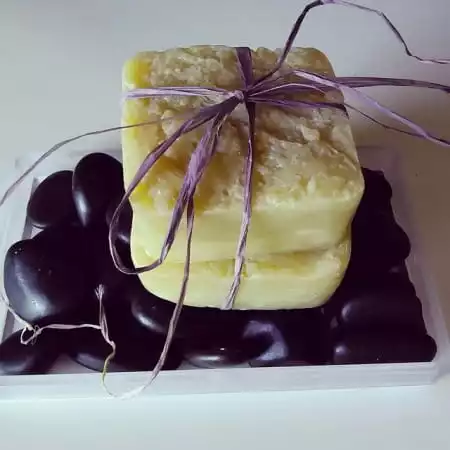What is Melt and Pour Soap?
Melt and pour soap making is a great choice when you want to make soap but are short the time. It’s quick, easy and there’s no messing around with lye or oils. Some soap makers prefer melt and pour because the process is simple and allows the soap maker to focus more on the aesthetic aspects of soap making.
Melt and Pour soap is a glycerin soap base that is easily melted, colored, and molded into a stunning and creative soap. It is very gentle on perfume and essential oils, and you need not use as much fragrance as with regular cold process soap making. It is a great way to start soap, as it is easy to use, can be adapted to using everyday ingredients, and can develop and become more creative as you become more confident with your soap crafting.
Making soap with a melt and pour base is like making a cake with a cake mix. What you lose in control of your soap ingredients and customization of your recipe, you make up for in safety and convenience.
Melt and pour soap is created by purchasing pre-made blocks of uncolored, unscented soap base from a craft store or soap supplier. The soap base is melted in a double boiler or microwave. Once the soap has completely melted, add the fragrance, color, and additives. Place it in a mold, and voila, you’re done. Your soap is ready to use once it hardens.
To begin with a melt and pour soap making, you need:
- A countertop workspace with a microwave or double boiler.
- A heat-resistant bowl for the microwave.
- A couple of whisks or spoons.
- Some melt and pour soap base.
- A couple of measuring spoons.
- Fragrance, color, or additives, as desired.
- Something to mold the soap.
Pros and Cons of Melt and Pour Soap
Pros
- An easy and inexpensive way to create soap.
- No need to cope with a dangerous lye mixture.
- You don’t need a lot of ingredients to start.
- Your soap is ready to use once it hardens.
Cons
- No control over your ingredients.
- Melt and pour isn’t quite as natural as other methods.
- Your soap is only as good as the base you buy.
Tips for making Melt and Pour Soap
- Make sure to use a good soap recipe. Even though it is simple to make soap this way, you’ll need a soap recipe to ensure the color, fragrance, and optional additives are in the correct amounts.
- Make sure you’re wearing the proper safety equipment. Wear protective clothing, gloves, safety goggles, and shoes. The temperature of melted soap is very high. If you splash by accident, you won’t be burned.
- You’ll need the right soap-making tools. You can melt the block of soap in the microwave or double boiler, but you’ll need a solid microwave-safe bowl or jug for doing this.
- Make sure that you make soap in a well-ventilated area.
- When making soap, avoid being distracted by children or pets. You don’t want them to get splashed by accident, which can happen if you’re distracted by something.
- Ensure that you use a good quality soap melting base with the appropriate colors and fragrances for making soap.
- Fun to choose the molds that you will be using. You can make use of shell molds, floral molds, heart molds, animal-shaped molds, or any fancy mold.
- Allow sufficient time to place the soap. It usually takes a couple of hours to sit in the refrigerator or about one hour. Don’t put it in the freezer.
- If you’re having trouble unmolding your soap, run warm water over the mold base. The soap should come out quickly.
- Take pleasure in using your wonderful handmade soap. You can use it right away once it’s been set.
